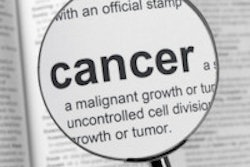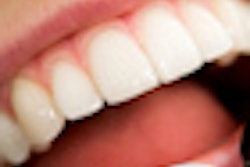
A new study has found that chronic periodontitis is an independent risk factor for head and neck squamous cell carcinoma.
Although there is substantial evidence that supports an association between chronic infections/inflammation and cancer, the aim of this study (Cancer Epidemiology, Biomarkers and Prevention, September 2009, Vol. 18:9, pp: 2406-2412) was to assess the effect of chronic periodontitis on head and neck squamous cell carcinoma (HNSCC), noted the study authors.
"The results of this study provide the first evidence of an association between chronic periodontitis and HNSCC based on an objective and quantitative measure of periodontitis history," said lead author Mine Tezal, D.D.S., Ph.D., assistant professor at the State University of New York at Buffalo.
In addition, it is the first study to assess this association individually for oral, oropharyngeal, and laryngeal cancers, she said. The findings also suggest that chronic periodontitis predicts poorly differentiated tumor grade in the oral cavity and that the periodontitis-HNSCC risk is weaker in current smokers compared to former smokers.
The researchers evaluated 473 patients at the Department of Dentistry and Maxillofacial Prosthetics of Roswell Park Cancer Institute between 1999 and 2005. This included 266 patients diagnosed with primary HNSCC and 207 controls who were negative for malignancy.
Periodontitis was measured by alveolar bone loss (ABL) from panoramic radiographs by one examiner blind to cancer status. Each millimeter of ABL was associated with a greater than fourfold increased risk of HNSCC after adjusting for age, gender, race/ethnicity, marital status, smoking status, alcohol use, and missing teeth.
Unexpected findings
The strength of the association was greatest in the oral cavity, followed by the oropharynx and larynx, the researchers found. The association persisted in those patients who never used tobacco and alcohol, but it was strongest in former smokers.
The researchers did not expect the periodontitis-HNSCC association to be weaker in current smokers compared to former smokers and those who never smoked, according to Dr. Tezal. However, this interaction, although statistically significant, was not very strong.
The authors also found that patients with periodontitis were more likely to have poorly differentiated tumor status in the oral cavity.
"Continuous stimulation of cellular proliferation by chronic inflammation may be responsible for this histological type," said Dr. Tezal. "However, grading is subjective, and we only observed this association in the oral cavity. Therefore, this association may be due to chance and needs further exploration."
Dr. Tezal explained that the chronic periodontitis-HNSCC link could be a direct toxic effect of oral microorganisms or an indirect effect through inflammation. Recent studies have confirmed the critical roles of several proinflammatory genes and proteins in cancer development.
Evidence of a periodontitis-HNSCC association has practical implications for prevention, early diagnosis, and treatment, although validation through further prospective studies is essential, the authors concluded.
Patients should be informed about this possible link and be given effective oral hygiene instructions (flossing and brushing), Dr. Tezal said.
"Prevention of periodontitis may decrease the incidence of HNSCC, while periodontal treatment, as an adjunct to conventional oncologic management, may improve the prognosis of this disease," she added.
Copyright © 2009 DrBicuspid.com



















